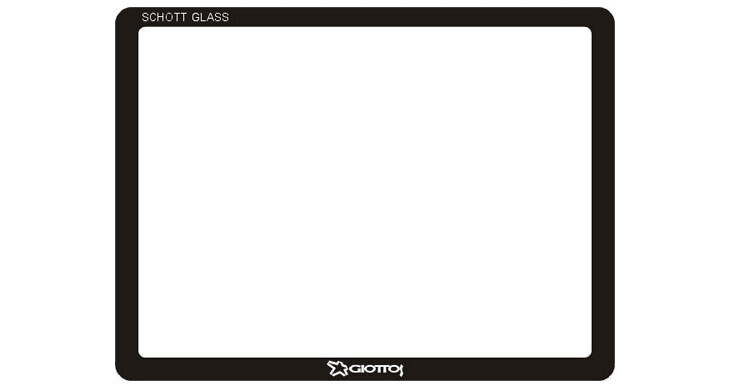Potential double-sided tapes, 3M 9482PC or 3M 9485PC, the former is .002" thick, the latter is .005" thick. Both are available from McMaster-Carr as part numbers, 7628A68 and 7628A72, respectively. These tapes are Very High Bond (VHB) designated tapes, and to my knowledge, there is no solvent (for easily cleaning away/removal). For using the .002" thick, the contact surface must be very smooth. The .002" will also be rather challenging to work with.
To apply (to the glass), I'd suggest four pieces, two along the horizontal and two on the vertical. You may want to use a thin cotton swab, just slightly wet with isopropyl alcohol, to gently clean only the black areas where previous adhesive existed. The McMaster p/n tapes are .5" wide. Don't try to pre-cut the tapes to match the width of black on the glass. Cut the tape to approximate length (either for horizontal or vertical), leaving the release liner on the tape, and apply onto the glass covering just the black perimeter region (allowing the excess width to protrude beyond the glass). Press/rub the tape (with its release liner in place) for ~10 seconds. Then, using a sharp razor blade, cut the regions of tape protruding beyond the glass (using the glass as a guide). You'll now have the cover glass, with four pieces of VHB tape (with release liner), on four sides of the glass covering the black regions (former adhesive areas), matching the outer glass dimensions. The corners of the glass will not have tape, and these will be openings (between LCD and glass) following installation. Over time, It may be possible for some dust migration into the gap between LCD glass (blowing this out may not be possible). I don't have an immediate suggestion for sealing these corners.
There will be a challenge in accurately placing the glass onto the LCD. The VHB tape allows very little opportunity for repositioning after placement. Remove one of the release liners and begin to seat the glass, tilting it so that just a line of the exposed adhesive contacts the LCD. With tweezers, as the glass will be too close to the LCD to use your fingers, remove the remaining release liners and push the glass in place onto the LCD. In less than a few minutes, it may become impossible to remove the glass from the LCD. Make sure everything is clean before installing the glass as you don't want to be permanently looking through a dirty glass onto a dirty LCD.
I'm thinking the .005" thick VHB is the more appropriate for this application, unless the contact areas of the LCD and glass are very smooth.
With the limited repositioning aspect of this VHB tape, practice applying numerous times with this tape on representative samples to gain understanding. For example, if you have an old credit card (or similar) pretend it's the cover glass and apply the tape as would be done with the actual cover class. Before applying the tape to the credit card, outline the credit card on a piece of card board, then thicken the outline; that is your practice LCD. Practice the procedure multiple times until you're fully comfortable and confident. Being completely confident is necessary, as stated earlier, to my knowledge (~15 years ago when I called 3M) there is no solvent. If the cover glass is installed slightly askew of the LCD, or the LCD/glsss is dirty, it's likely not possible to remove the glass, even with a gentle solvent application about the perimeter (as there is no solvent). That initial seating of the glass on the LCD must be exceptionally well aligned and all surfaces clean. I can not overstate with this VHB being structural grade, reworking the glass application to the LCD, is not possible.






